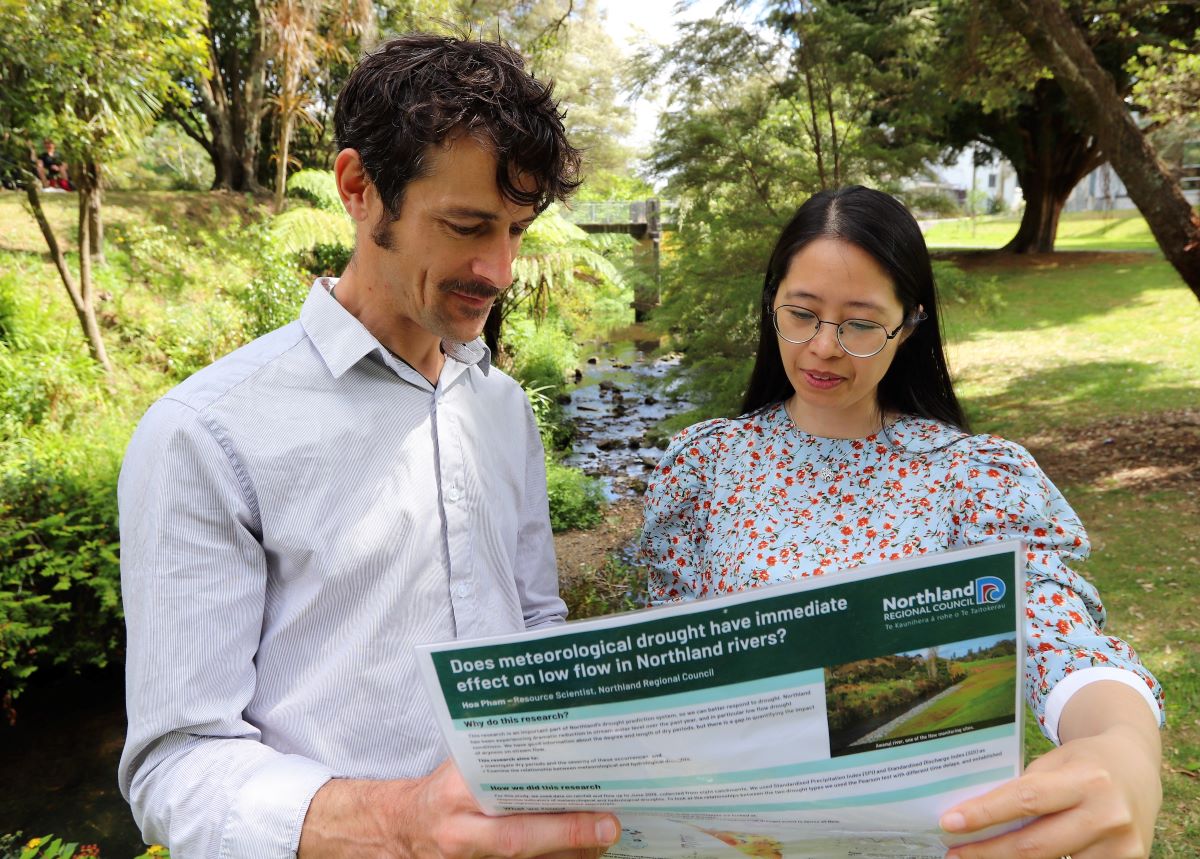Hydrological versus meteorological drought
26 Nov 2019, 12:43 PM
When is a drought not a drought? When it’s a hydrological drought instead of a meteorological drought.
Confused? You’re not alone, but a Northland Regional Council scientist and her manager are investigating the differences between – and local implications of – the two drought types in Northland.
Hoa Pham, council’s Resource Scientist - Surface Water, with the support of her manager, Natural Resources Science Manager Jean-Charles Perquin, has recently written an article on the issue for the New Zealand Hydrological Society and will be presenting to the society’s upcoming conference in Rotorua 01-06 December.
Ms Pham says in very broad terms, the simplest explanation of meteorological drought is what most people understand a drought to be – a lack of rain over a reasonably long time makes things very noticeably dry.
“It’s pretty easy to measure low rainfall and for how long this has been going on.”
But hydrological drought is arguably more complex and is what happens to the region’s actual hydrological processes; its rivers, lakes, reservoirs and groundwater, especially over the longer-term.
In some cases, the impacts of meteorological drought are still effectively impacting on local stream flows – which can remain lower than usual – more than a year after the rain comes again and a drought appears to be well and truly over.
The duo is currently investigating the relationship between the two types of drought, including the historical impacts (including severity) of meteorological droughts, their influence on stream flows and how these can be used to model current and future impacts.
Ms Pham says with Northland experiencing a number of droughts in recent years, their research is expected to provide valuable and useful information, noting that over the period studied for the presentation (July 2018-June 2019) the amount of water in some Northland streams had reduced ‘dramatically’.
The regional council is already keeping a close eye on the water situation in Northland with the region inching ever closer to another potentially dry summer and local authority water restrictions already in place in some areas.
Figures released by the NRC in October, showed Mid and Far North areas had typically received a third to 40 percent less rain than usual over the past 12 months.
The problem had been made worse by consecutive dry periods leading up to winter this year.
In the first six months of this year Kerikeri and Whangarei were the driest they’d been in more than 80 years (since 1935 and 1937 respectively) and the situation hasn’t really improved since then, with lower than average rainfall through winter.
Mr Perquin says river and rainfall data is available on the regional council’s website via: www.nrc.govt.nz/riversandrain
Water restrictions for public water supplies operated by Northland’s three district councils are available at: www.bewaterwise.org.nz

Hoa Pham (pictured here with her manager Jean-Charles Perquin) will present on their research into the differences between – and local implications of – meteorological and hydrological drought in Northland at an upcoming New Zealand Hydrological Society conference in Rotorua.
